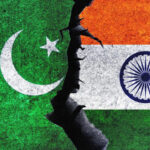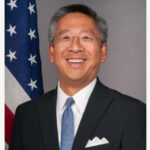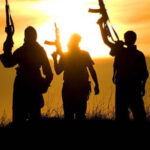Given concerns over Indian influence, New Delhi must exercise caution in the run-up to Bhutan’s elections
In the larger scheme of things, highway markers — the reflective stickers on railings that guide traffic on Bhutan’s steep mountain roads — should not be a big issue. But when the Border Roads Organisation, which helps build Bhutanese roads under Project Dantak, decided in July to make those markers in shades of the Indian tricolour, it raised red flags among the Bhutanese on social media. Citizens were worried that this was an attempt by India to impose its flag on their countryside. This wasn’t a first. In April last year, the Department of Roads had to remove a board which read “Dantak welcomes you to Bhutan” at the Paro international airport. And on the Thimphu-Phuentsholing arterial highway, another board that credited the “Government of India” had to be painted over. Eventually, in the recent case, which was covered by the national weekly The Bhutanese, the Minister for Public Works stepped in, and the stickers were changed to blue and white.
The incident was a blip in India-Bhutan relations, but it is a clear indicator of heightened sensitivities in the Himalayan kingdom as it heads to its third general election. The National Assembly of Bhutan was dissolved and an interim government was appointed this month ahead of the election, which will be completed by October-end, marking 10 years of democracy in Bhutan.
Sovereignty and self-sufficiency
The People’s Democratic Party, led by imcumbent Prime Minister Tshering Tobgay, enters the elections with a visible edge, even if it may not be able to better its landslide victory in 2013, when it won 32 of the 47 seats. At his party’s first rally on August 4, Mr. Tobgay touted the 8% GDP growth in favour of his party, which has been fuelled by a construction and tourist boom in Bhutan. He can also take credit for stabilising the rupee-ngultrum crisis that he had inherited, as well as for economic reforms including lifting the import ban on cars. However, Mr. Tobgay has been unable to curb the national debt, owed mostly to India for hydropower loans, as he had promised to do in his last campaign.
Attacking Mr. Tobgay over a perceived “pro-India” stance will be part of the Opposition’s messaging. At its first rally, on July 29, the Druk Phuensum Tshogpa (DPT) party president, Pema Gyamtsho, said that “sovereignty, security and self-sufficiency” were the DPT’s top priorities. Crucially, this election comes after the 73-day India-China stand-off in 2017 in the Bhutan-claimed area of Doklam. Even though public commentary on the tensions has been frowned upon, Mr. Gyamtsho’s statement advocates a Bhutanese foreign policy that is less dependent on India. Another party in the fray, the Bhutan Kuen-Nyam Party, which has drawn large crowds at its meetings and derives some backing from a respected religious figure in eastern Bhutan, has a similarly worded campaign manifesto title: “For a self-reliant Bhutan: our concern, our responsibility”. Clearly, though Mr. Tobgay has called the raising of “sovereignty” issues by the Opposition as scaremongering, the concerns over India’s or any other country’s presence in Bhutan’s domestic and foreign policy are not being dismissed.
Given this, India must step lightly and thoughtfully around the upcoming election. The Manmohan Singh-led United Progressive Alliance government’s decision to cut cooking gas subsidy just before the 2013 elections in Bhutan has often been shown as proof of Indian interference, especially by the DPT party that lost that election. Since then, the Narendra Modi government’s actions, indicating a preference for one party (for example, Sheikh Hasina’s Awami League in Bangladesh) or antipathy for another (such as for Mahinda Rajapaksa’s Sri Lanka Freedom Party), have been noted closely in Bhutan. The government would be best advised to keep high-profile visits at an arms length from the election process, especially given that there will be several such visits after the National Assembly is chosen. Mr. Modi is expected to visit Thimphu once a new government is in place, and Bhutan’s King Jigme Khesar Namgyel Wangchuck is expected for a state visit this year too.
Revisiting policies and issues
The ensuing months may also be a useful interlude to revise India’s Bhutan policy and address several issues that have come up in the past few years — for example, the hydropower projects where delays in constructing and commissioning in Bhutan by Indian companies have led to the country’s burgeoning national debt. Although the government agreed to raise tariffs for the original hydropower plant in Chukha (by about 30 paisa per unit) in February this year, other tariffs will need to be renegotiated too. In addition, India’s power-surplus status and the advent of other renewable energies like wind and solar power will make it more difficult for Bhutan to ensure that its hydropower sector becomes profitable. And unless India finds ways to help, it will be accused of the same sort of “debt-trapping” that China is accused of today. India also needs to focus on policing cross-border trade better. The goods and services tax still hurts Bhutanese exporters, and demonetisation has left lasting scars on the banking system.
The China question
The biggest issue between India and Bhutan will remain how to deal with China. The Doklam crisis has brought home many realities for the Bhutanese establishment. The first is that Doklam, which has long been discussed as part of a possible “package solution” to the Bhutan-China border dispute, could become a point of India-China conflagration, with Bhutan becoming a hapless spectator in the middle — again. Experts point out that China’s actions since last June, to build a permanent military presence above the stand-off point, mean that Bhutan has a much reduced advantage in any forthcoming negotiations on the issue. “We will continue to discuss Doklam de jure, but the situation has changed drastically de facto,” said one Bhutanese expert. After Mr. Modi’s Wuhan outreach and several meetings with Chinese President Xi Jinping, Bhutan too has decided that there is little point in avoiding engagement with China. China’s Vice Foreign Minister Kong Xuanyou’s July visit to Thimphu was an outcome of this stance.
Interestingly, these issues are reminiscent of the situation in September 1958 when Prime Minister Jawaharlal Nehru undertook the arduous three-week journey by yak across the Chumbi Valley to meet Bhutan’s third king, Jigme Wangchuck. The trip took place amidst rising tensions with China, even as it gave special clearance for the delegation to cross into Doklam. As former Foreign Secretary Jagat S. Mehta wrote in his book, Negotiating for India: Resolving Problems Through Diplomacy: “The running anxiety during the 1960s for Bhutan was to steer its external relations with China by giving neither provocation nor the impression of getting into a bear hug of dependence with India. Both could jeopardise [Bhutan’s] autonomy.”






NO COMMENT